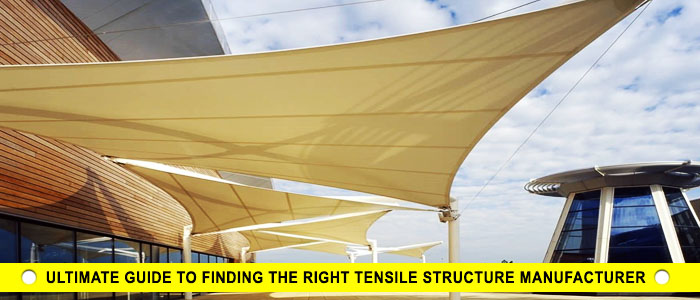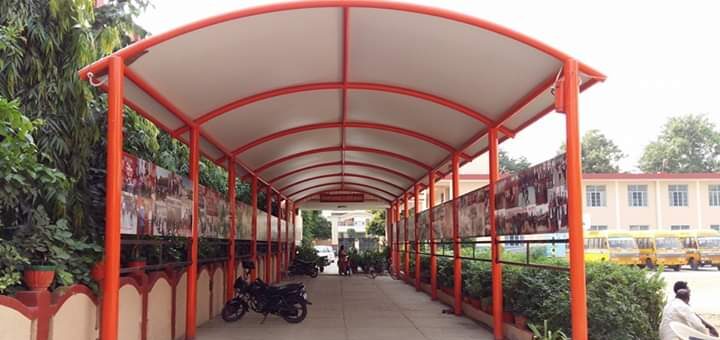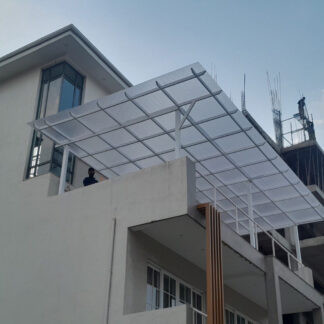What Are Tensile Lightweight Structures and Why Are They Everywhere?
December 14, 2025 By admin

What Are Tensile Lightweight Structures and Why Are They Everywhere?
Look around. Look up at the sky of a sports stadium, down at a downtown plaza, and you see some of the most exquisite and ingenious work of modern engineering. They are tensile, lightweight structures, and they are changing our skylines and our open spaces. But what exactly are they? And why have they become the solution of choice for architects and engineers globally? Now, we would like to tear the cloth (literally) back and discover the exciting world of tension-based design.
What is a Tensile Lightweight Structure?
Simply, a Tensile structure is a type of building structure in which tension, rather than compression (as with a brick wall) or bending (as with a wooden beam), gives the building its structural integrity. Imagine a simple tent. The cloth will hang loose till you draw the ropes. When it is strained, the cloth becomes taut and firm and can support itself and withstand the wind. It was the same principle that gave rise to a modern Tensile fabric structure, which is a high-tech, engineered development.
It is normally composed of three main parts:
- Tensile membrane: A tensile membrane is a sturdy, engineered fabric (such as PTFE-coated fiberglass or PVC-coated polyester) that is pulled into position.
- A supportive framework: This may be a sequence of masts, arches, or perimeter beams that support the membrane.
- Hardware: Cables, clamps, and anchors that exert and control the tension forces.
Tensile membrane structure or tensile walkway structure—when we refer to such a structure, we are referring to special uses of the same core technology.
The Lightweight Superpower: Why They Are So Popular
The advantages of selecting a tensile design are numerous, which have contributed to its explosive popularity.
- Released Iconic Architecture: Tensile systems can be used to make dramatic and sweeping curves and forms, which cannot be made using traditional materials. They also enable architects to design iconic and visually stunning structures that are instantly recognizable.
- Efficiency in Material and Cost: The material is in a pure tension state; thus, it is operating at its peak capacity. This implies that you can get such wide distances covered with such a small portion of the material that would be used in a steel or concrete roof, and therefore, it is a highly effective solution and can be much more cost-effective.
- Speed of Construction: Components of the tensile system can be assembled at a very high speed and prefabricated off-site. The construction process of a large canopy is to hoist up the pre-assembled membrane and to tension it, and this saves a lot of time on-site in comparison to traditional building.
- Durability and Resistance to the Weather: Architectural fabrics are extremely strong nowadays. They are:
- Weatherproof: Made to withstand rain and snow.
- Fire Retardant: Treated to comply with the rigorous international fire safety standards.
- UV Resistant: It helps to protect the material against degradation and gives a shade to the area below.
- Durable: Fabric membrane coverage is 25 years and beyond on many of the larger types.
- Sustainable by Design: The sustainability of Tensile lightweight structures is sustainable in nature. Embodied carbon is minimized by their low consumption of materials. Moreover, most membranes can be recycled, and they can give shade (less cooling and, in many cases, natural daylight), which produces energy-efficient buildings.
How to Find Them in the Wild: Tensile Structure Locations
That is why they are everywhere. Their multitude of uses can be described as ideal in a vast number of applications:
- Sports/Entertainment: The largest usage. Imagine the roof of the Olympic Stadium in Munich or Denver International Airport. These vast projects demonstrate the power to span enormous, column-free areas.
- Transportation Hubs: Tensile canopies have dramatic portals at entryways and blanketed walkways in airports, bus terminals, and train stations. Tensile walkway construction is a typical feature in airports that shields the people involved against weather conditions as they traverse terminals.
- Public and Business Areas: Shaded playgrounds and amphitheaters to covered outdoor restaurants and atria of shopping malls.
- Facades: Tensile membranes are increasingly applied as backlit, dynamic facades, which enchant the eye day and night.
The Future Is Tensioned
As beautiful as they are in providing elegant shade in a park, lightweight tensile structures contain a dream match of art and engineering. They are a statement of human resourcefulness—maximum effect with minimum material, whether in terms of visual impact or functionality.
With further progress in fabric technology and software of computational design, there is yet more to marvel at as tensile membrane structures are more breathtaking and sustainable in the future, sculpting the world we will live in tomorrow. Next time you pass beneath a grand piece of fabric canopy, pause to admire the strong tension on which it is all suspended.






